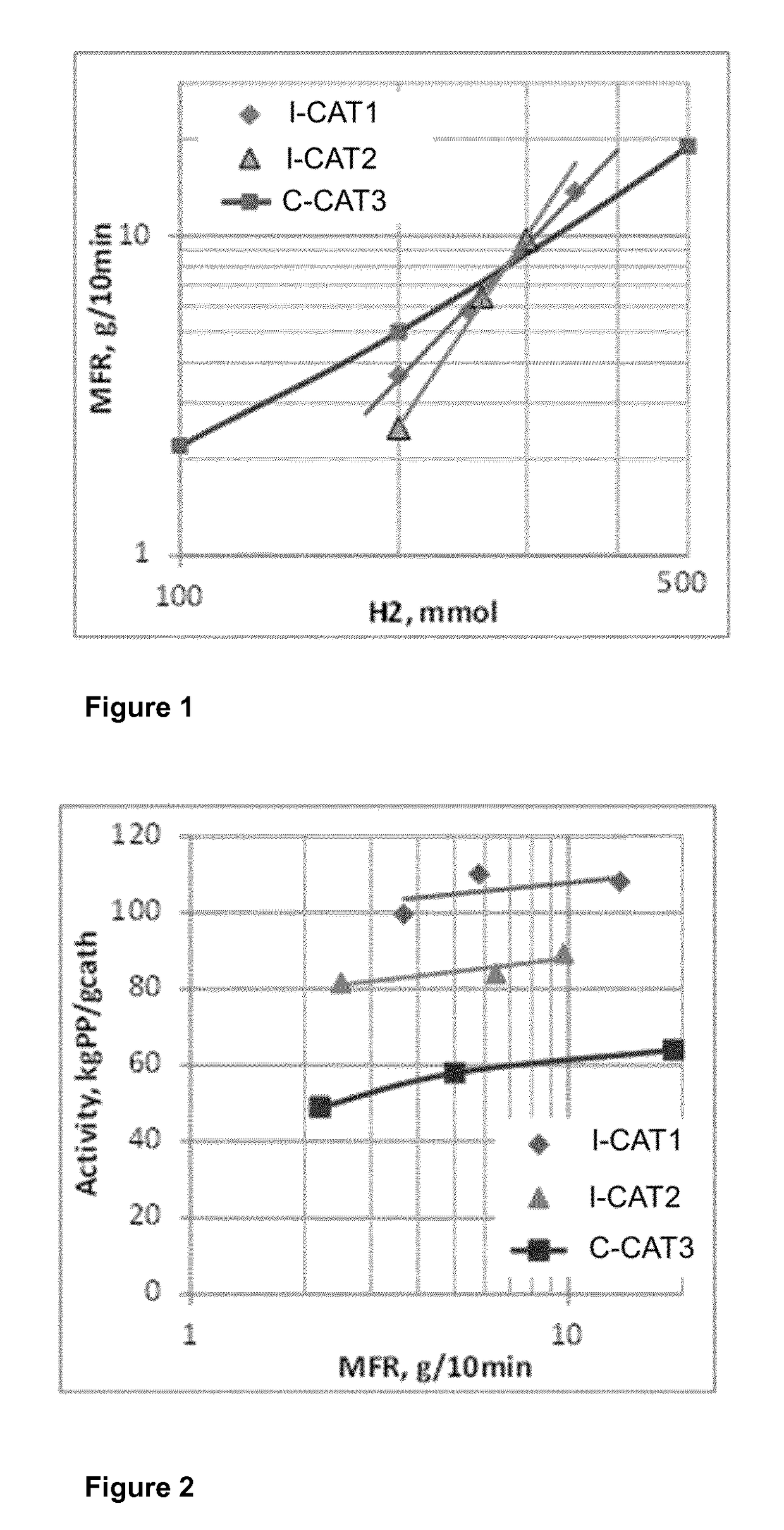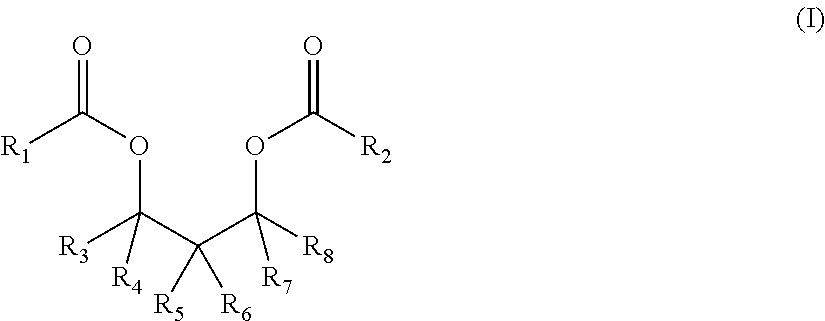Catalyst component
a technology of catalyst and component, applied in the field of catalyst components, can solve the problems of high concentration of catalytically active compounds on the support material, uniform distribution of active components within the catalyst particle, and harmful in some polymer applications
- Summary
- Abstract
- Description
- Claims
- Application Information
AI Technical Summary
Benefits of technology
Problems solved by technology
Method used
Image
Examples
examples
[0183]Used Chemicals:
[0184]2-ethyl-hexanol—CAS no 104-76-7
[0185]propylene glycol butyl mono ether—CAS no 5131-66-8, provided by Sigma-Aldrich
[0186]bis(2-ethylhexyl) citraconate—CAS no 1354569-12-2, provided by SymphaBase 2,2,4,-trimethyl-1,3-pentanediol dibenzoate—CAS no 68052-23-3, provided by Sigma-Aldrich
[0187]Necadd 447—provided by M-I SWACO
[0188]Viscoplex 1-254—provided by RohMax Additives GmbH
[0189]diethyl aluminum chloride—CAS no 96-10-6, provided by Witco
[0190]1,8-naphthalenediol bis(4-tert-butylbenzoate)—CAS no 331711-99-0
[0191]1,3-Propylene glycol diacetate—CAS no 628-66-0
[0192]did-octyl phthalate (DOP)—CAS no 117-81-7
[0193]FIG. 1: In FIG. 1 MFR2as a function of added hydrogen amount in the polymerization is disclosed for inventive catalyst components I-CAT1 and I-CAT2, and for comparative catalyst component C-CA3.
[0194]FIG. 2: In FIG. 2 activities of the catalyst components I-CAT1, I-CAT2, C-CA3 at different MFR2-levels are disclosed.
[0195]Preparation of Solid Catalyst Co...
PUM
| Property | Measurement | Unit |
|---|---|---|
| Length | aaaaa | aaaaa |
| Fraction | aaaaa | aaaaa |
| Fraction | aaaaa | aaaaa |
Abstract
Description
Claims
Application Information
 Login to View More
Login to View More - R&D
- Intellectual Property
- Life Sciences
- Materials
- Tech Scout
- Unparalleled Data Quality
- Higher Quality Content
- 60% Fewer Hallucinations
Browse by: Latest US Patents, China's latest patents, Technical Efficacy Thesaurus, Application Domain, Technology Topic, Popular Technical Reports.
© 2025 PatSnap. All rights reserved.Legal|Privacy policy|Modern Slavery Act Transparency Statement|Sitemap|About US| Contact US: help@patsnap.com



